AI in Education and Training
AI in Education and Training is reshaping the way people learn and develop skills. By leveraging artificial intelligence, schools, universities, and businesses can provide personalized learning experiences, automate administrative tasks, and improve training efficiency. From adaptive learning platforms to intelligent tutoring systems, AI is driving innovation that enhances student engagement, boosts workforce development, and prepares learners for the future.
Artificial intelligence (AI) is rapidly transforming education and training worldwide. AI-driven tools customize learning experiences, automate routine tasks, and unlock new teaching resources. UNESCO notes that AI "has the potential to address some of the biggest challenges in education" and accelerate progress toward global learning goals like the UN's Education 2030 Agenda (SDG4).
International experts emphasize a human-centered approach: AI must be deployed equitably so that "everyone can take advantage" of this technological revolution. This article explores how AI is being applied in classrooms and training programs, the benefits it offers, and the challenges that must be managed for effective implementation.
Personalized Learning and Adaptive Systems
A key advantage of AI is its ability to deliver personalized learning experiences. Adaptive platforms analyze each student's performance—quiz results, response time, engagement patterns—and tailor instruction accordingly. They provide extra practice on challenging topics and accelerate when mastery is demonstrated.
Performance Analysis
Adaptive Pacing
Instant Feedback
When designed inclusively, AI tools help close learning gaps and ensure all students benefit from technological advances in education.
— UNESCO, Education 2030 Framework
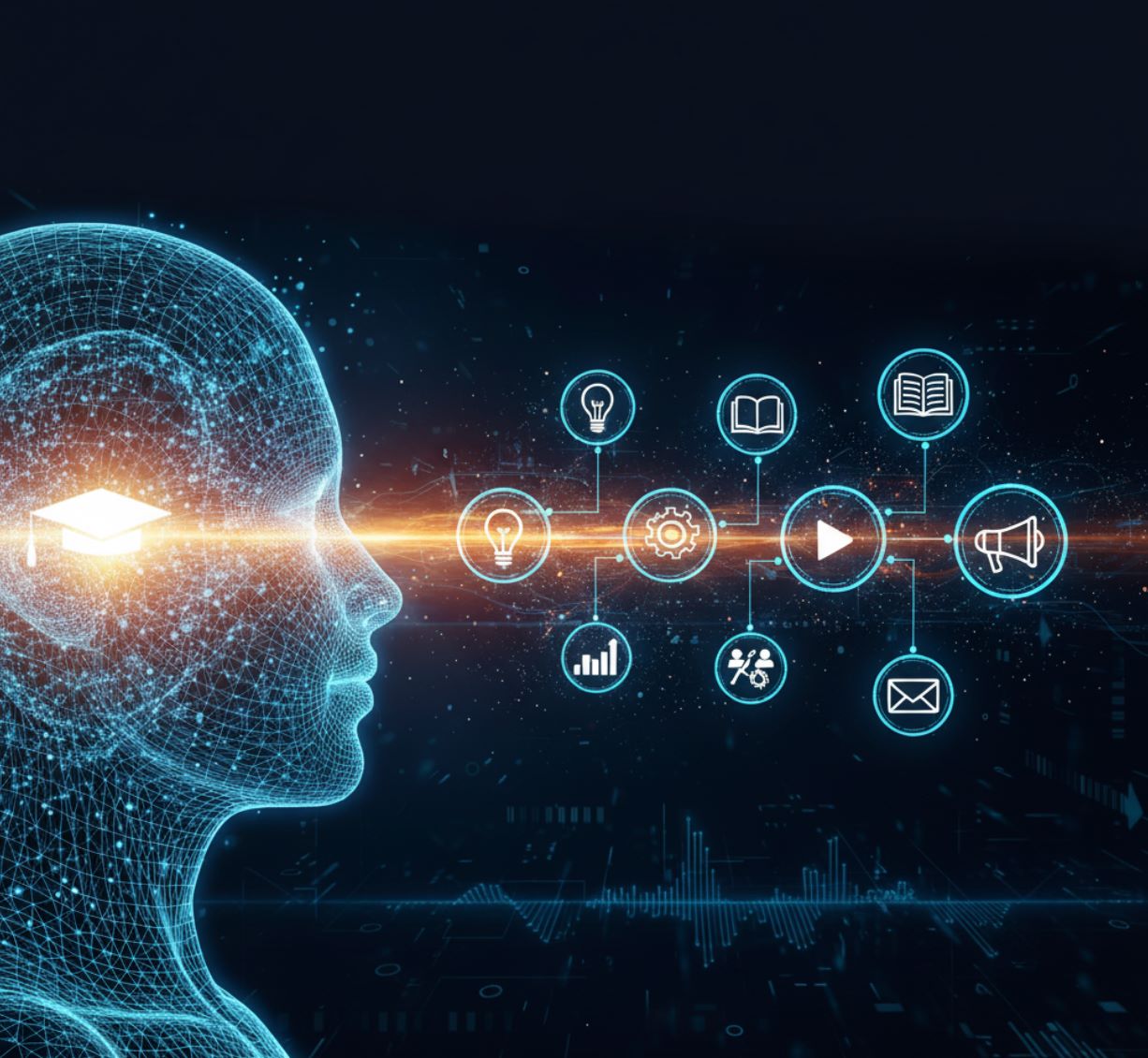
Intelligent Tutoring and Content Creation
AI-powered tutoring systems, chatbots, and virtual assistants are becoming standard in modern education. Tools like ChatGPT and similar models answer student questions, explain concepts in multiple ways, and assist with essay drafting. An OECD analysis found that GPT-4 scored approximately 85% on international reading and science tests—higher than the average student—highlighting AI's growing academic capability.
24/7 Learning Support
AI tutors provide round-the-clock assistance, making learning more interactive and accessible.
- Instant answers to student questions
- Multiple explanation approaches
- On-demand practice problems
- Writing assistance and feedback
Rapid Content Generation
Educators use AI to quickly create educational materials, saving hours of preparation time.
- Generate quizzes and assessments
- Create presentation slides
- Produce illustrative images
- Recommend personalized learning paths
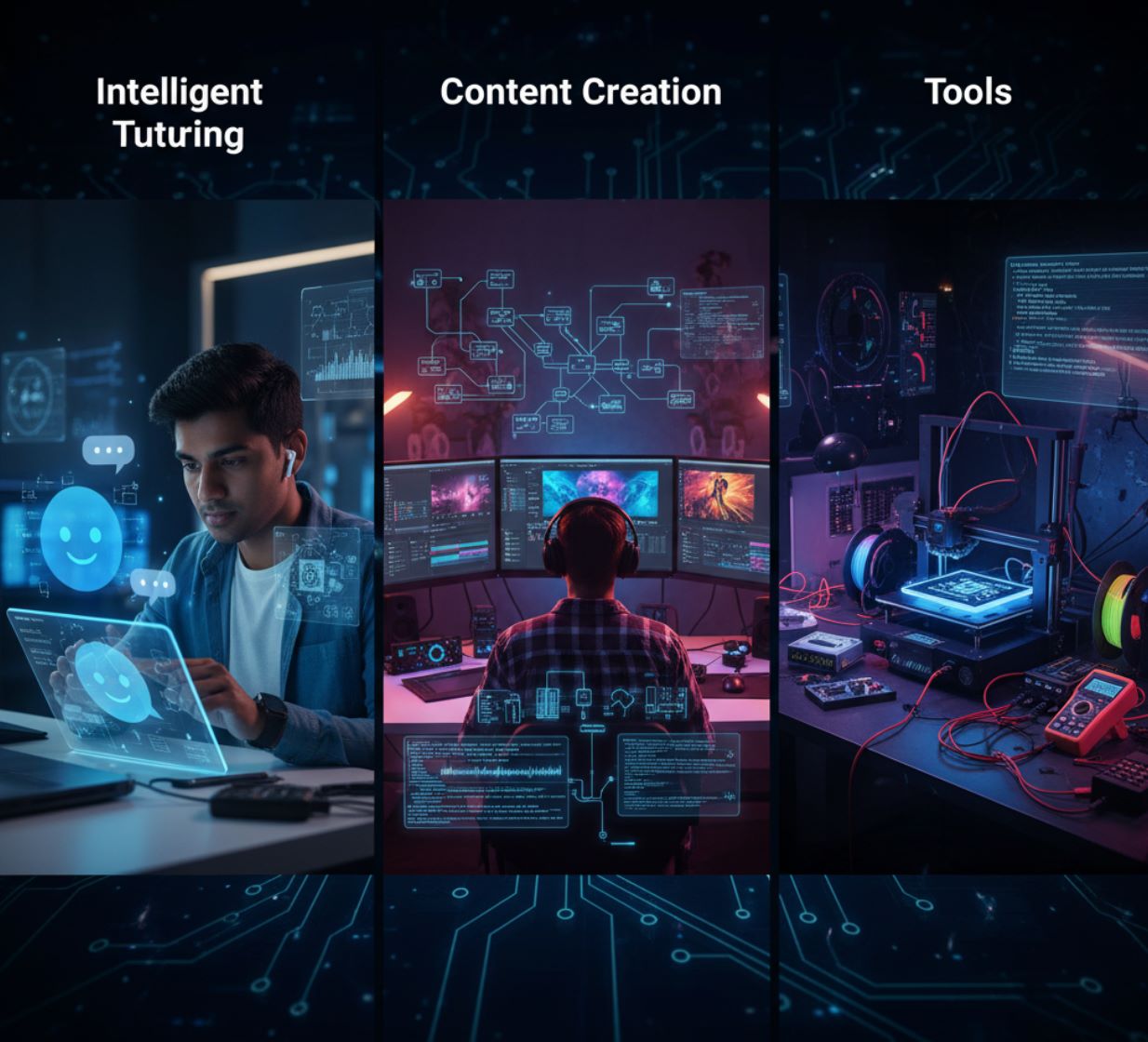
Supporting Teachers and Schools
AI provides substantial support to educators and educational institutions, automating time-consuming tasks and enabling data-driven insights. AI-driven software can grade objective assignments, provide initial essay feedback, track attendance, and monitor test scores to identify at-risk students for early intervention.
Manual Administrative Work
- Hours spent grading assignments
- Manual attendance tracking
- Time-consuming scheduling
- Delayed student intervention
- Limited personalized attention
Automated & Intelligent
- Automated grading and feedback
- Smart attendance monitoring
- AI-powered scheduling systems
- Early warning systems for at-risk students
- More time for hands-on teaching
The World Economic Forum notes that AI can "streamline administrative tasks," allowing educators to spend more time on instruction and mentoring. However, effective adoption requires proper preparation and infrastructure.
Implementation Challenges
Training Gaps
Infrastructure Needs
Policy & Security

Skills Training and Lifelong Learning
AI is fundamentally transforming professional and vocational training. As the OECD notes, AI and robotics will "fundamentally transform work" over the coming decades, changing the skills people need. Companies increasingly use AI-powered learning platforms to upskill employees with personalized training paths tailored to individual abilities and career goals.
Skills Assessment
AI systems evaluate current employee abilities, knowledge gaps, and career objectives through comprehensive analysis.
Personalized Path Creation
Based on assessment results, AI recommends customized courses, simulations, and real-world projects aligned with job requirements.
Immersive Practice
Trainees use AI-driven virtual labs and simulations for hands-on practice in safe, controlled environments.
Continuous Improvement
AI provides ongoing feedback and adjusts training dynamically as skills develop and workplace needs evolve.
Practical Applications in Workforce Training
Medical Training
Manufacturing Skills
Customer Service
Language & Accessibility
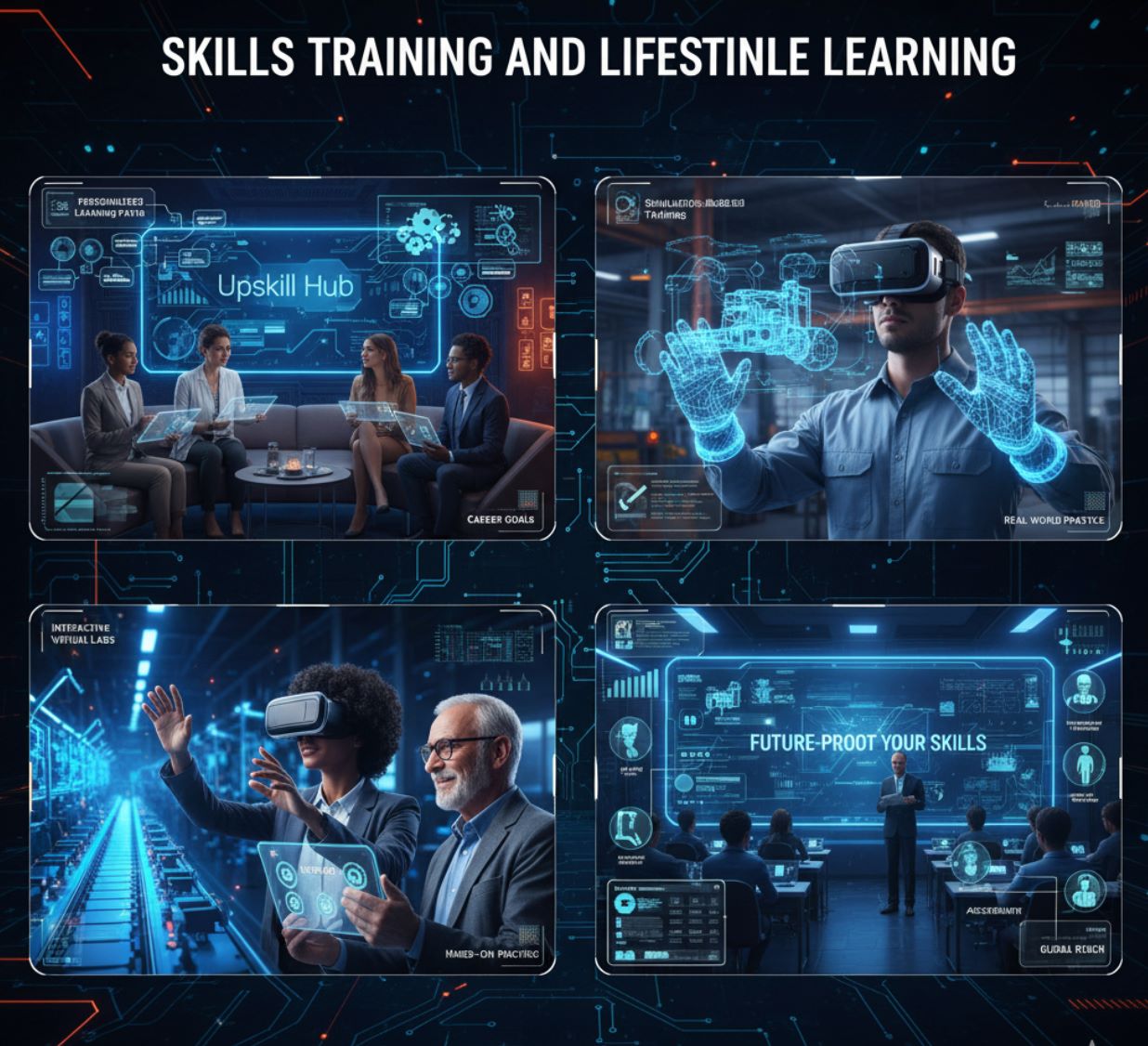
Accessibility and Inclusion
AI-based technologies are dramatically improving access for learners of all backgrounds and abilities. Text-to-speech, speech-to-text systems, image recognition, and real-time translation enable students with visual, hearing, or learning disabilities to access materials that were previously difficult or impossible to use.
Visual Accessibility
AI tools help visually impaired students access visual content through audio descriptions and text-to-speech.
- AI apps describe diagrams and images aloud
- Screen readers with enhanced AI comprehension
- Automatic alt-text generation for images
Hearing Accessibility
Real-time transcription and captioning make audio content accessible to deaf and hard-of-hearing students.
- Live lecture transcription
- Automatic video captioning
- Sign language recognition and translation
Learning Disabilities
Students with dyslexia or reading difficulties can listen to textbooks and receive customized support.
- Text-to-speech for reading assistance
- Dyslexia-friendly formatting
- Personalized learning pace adjustments
Language Barriers
Real-time translation breaks down language barriers, making education accessible globally.
- Instant content translation
- Multilingual learning platforms
- Cultural context adaptation
Applying AI in education must bridge divides, ensuring that everyone can take advantage of new technologies. When thoughtfully deployed, AI can help learners with special needs or in underserved communities gain equal learning opportunities.
— UNESCO, AI and Education Guidelines
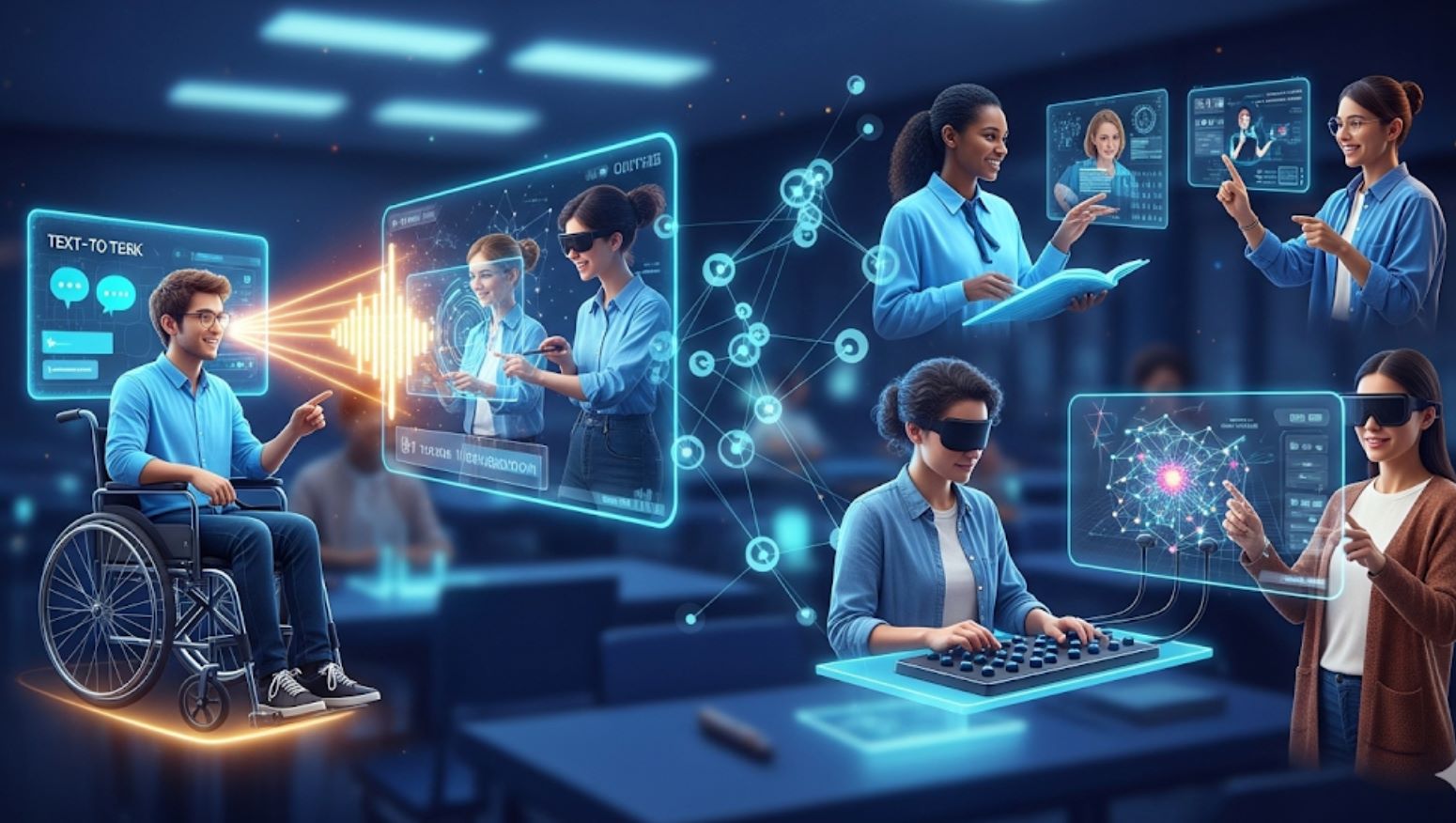
Challenges and Considerations
Despite its transformative promise, implementing AI in education requires careful attention to significant challenges. Responsible deployment demands addressing privacy concerns, bias issues, equity gaps, and the essential role of human educators.
Privacy and Security Concerns
AI systems rely heavily on collecting and analyzing student data, making data protection critical.
- Student data must be protected from misuse and security breaches
- Clear policies needed for data collection, storage, and usage
- Compliance with regulations like GDPR and FERPA essential
- Transparent communication with students and parents about data practices
Bias and Fairness Issues
AI systems can perpetuate or amplify existing biases, potentially disadvantaging certain student groups.
- Some AI tools misclassify non-native English writing as AI-generated
- Training data may contain historical biases affecting recommendations
- Algorithms might favor certain learning styles or cultural backgrounds
- Assessment tools require validation for fairness across diverse populations
Equity of Access
Without adequate infrastructure, AI tools risk deepening educational divides between advantaged and disadvantaged students.
- Not all students have access to necessary devices or reliable internet
- Rural and low-income communities often lack technical infrastructure
- Digital literacy varies significantly across student populations
- Cost of AI tools may be prohibitive for some schools and families
AI must not widen technological divides. Ensuring equitable access to AI-powered education requires deliberate investment in infrastructure and support for underserved communities.
— UNESCO, Technology and Education Report
Human Factors and Teacher Role
Technology must complement, not replace, the essential human elements of education.
- Teachers need comprehensive training in AI literacy and tool usage
- Balance required between technology and personal interaction
- Social and emotional aspects of learning must be maintained
- Educators remain essential for mentorship, motivation, and context
Regulatory Framework and Safeguards
Emerging regulations like the EU AI Act are being developed to ensure transparency and accountability in educational AI systems. These frameworks establish:
- Transparency requirements for AI decision-making processes
- Accountability standards for educational institutions and AI providers
- Risk assessment protocols for AI applications in education
- Rights for students and parents regarding AI-driven decisions
- Ethical guidelines for AI development and deployment
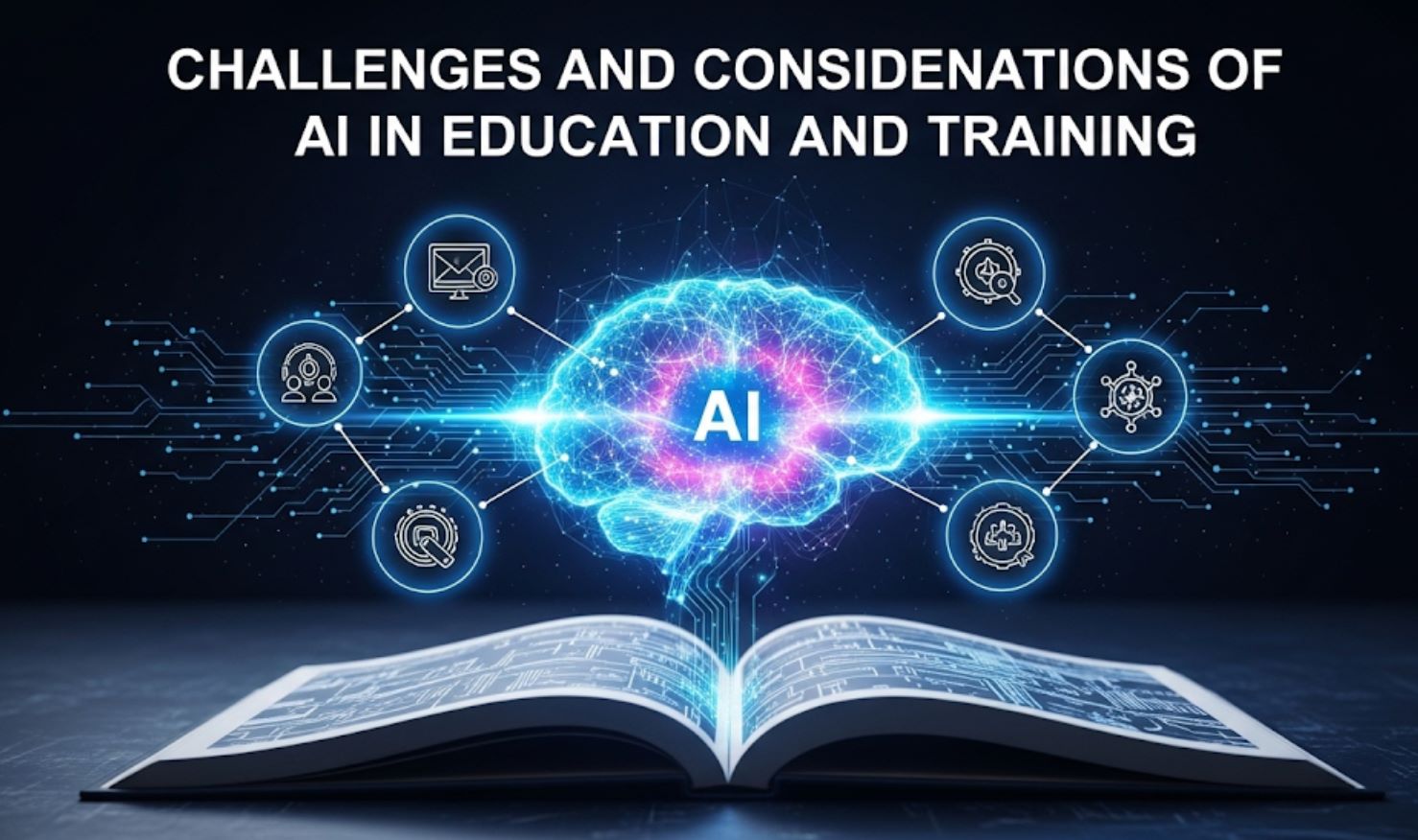
Conclusion: The Future of AI in Education
AI is rapidly becoming a cornerstone of education and training systems worldwide, enabling unprecedented levels of personalization, efficiency, and innovation in learning. From adaptive K–12 lessons to high-tech vocational training, AI tools help educators reach more students and meet diverse learning needs effectively.
Personalization at Scale
Enhanced Efficiency
Inclusive Access
By combining human teaching expertise with intelligent technologies, and by establishing smart policies and comprehensive teacher training programs, societies can harness AI to improve outcomes for all learners. This balanced approach enables AI to drive progress toward inclusive, lifelong learning—realizing education goals on a global scale while preserving the irreplaceable human elements that make education transformative.
One-Size-Fits-All
- Uniform pace for all students
- Limited personalization
- Time-intensive grading
- Delayed feedback
- Accessibility challenges
Personalized & Inclusive
- Adaptive learning paths
- Individual pace and style
- Automated assessment
- Instant feedback loops
- Universal accessibility




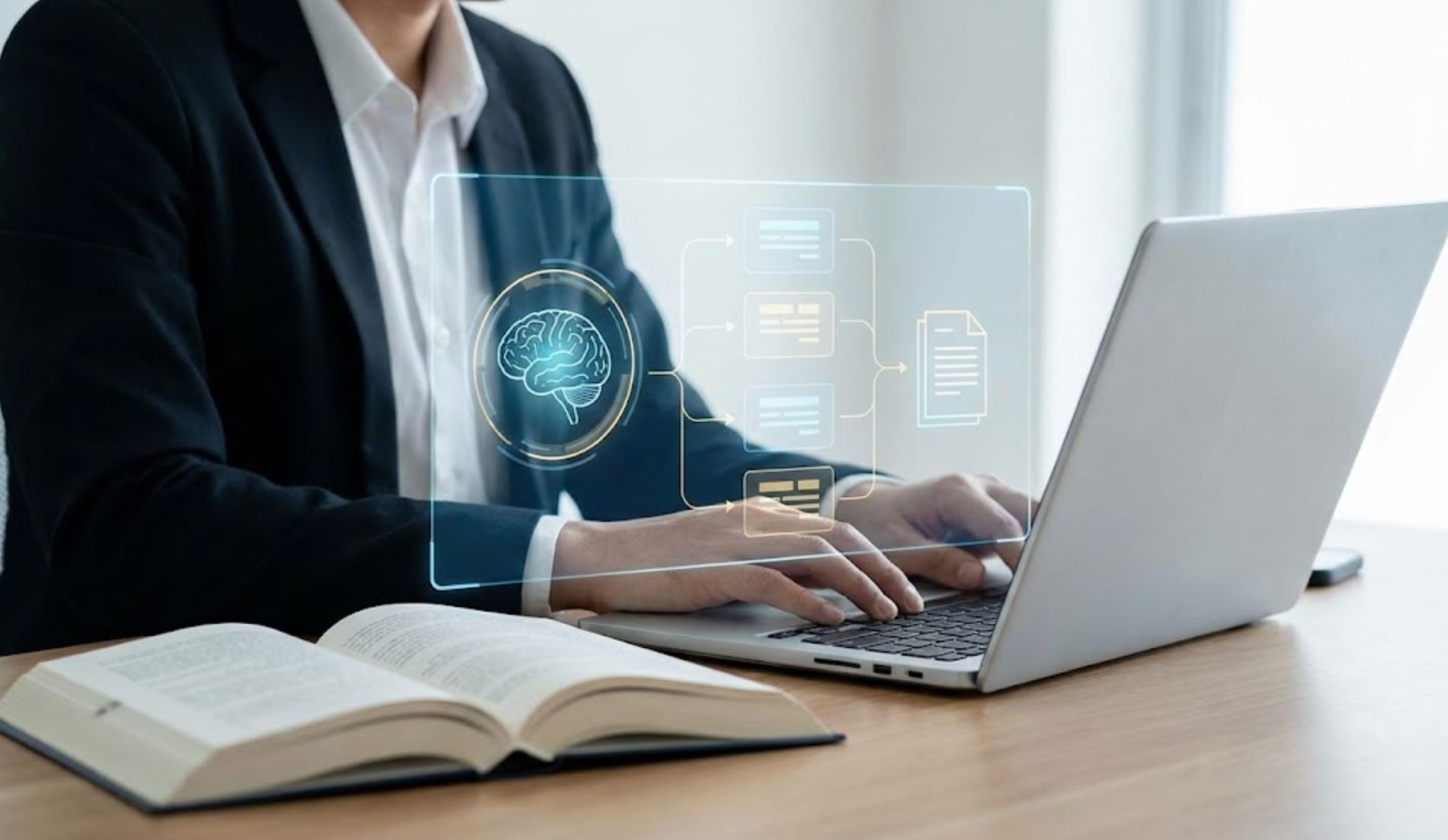
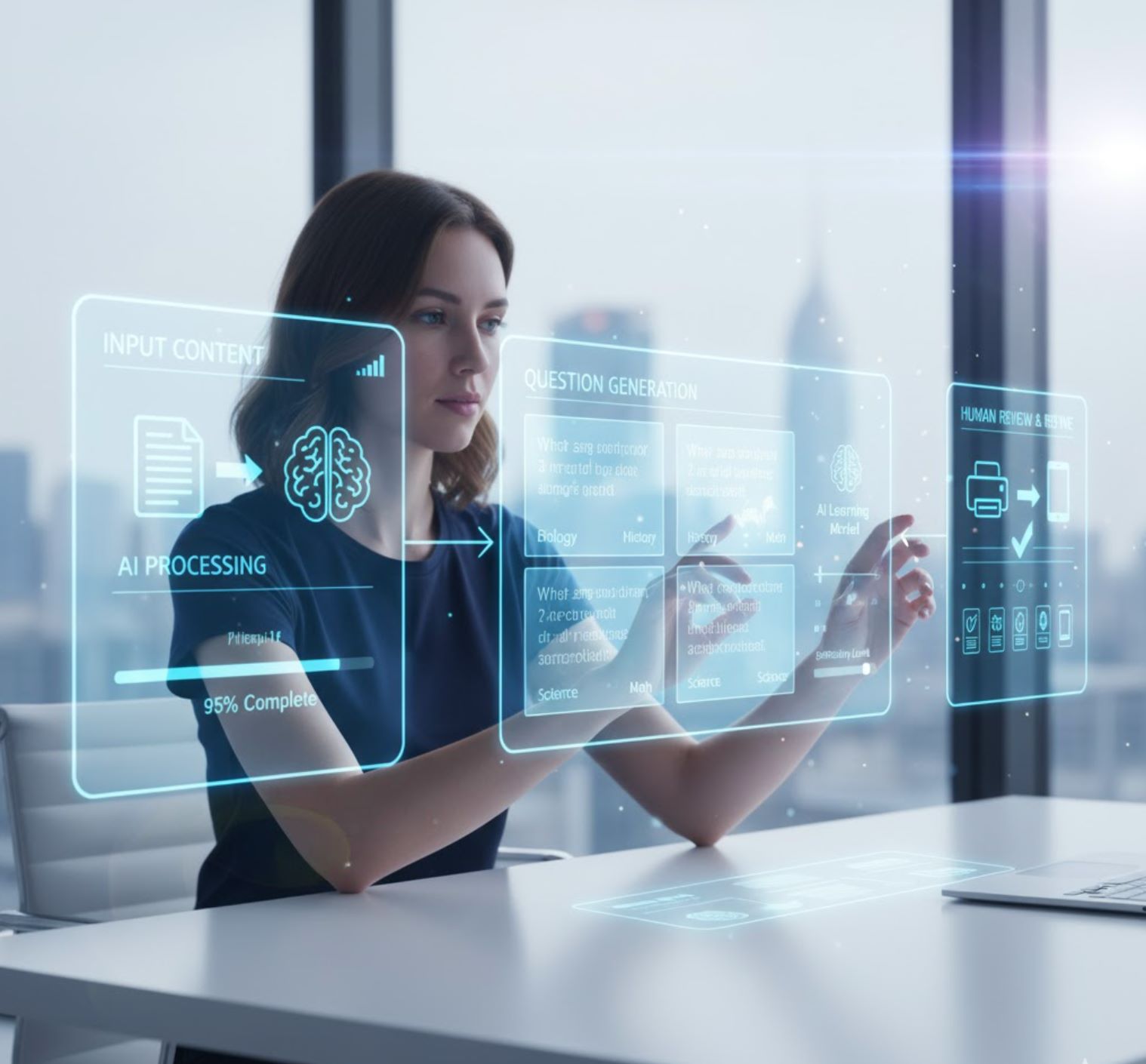
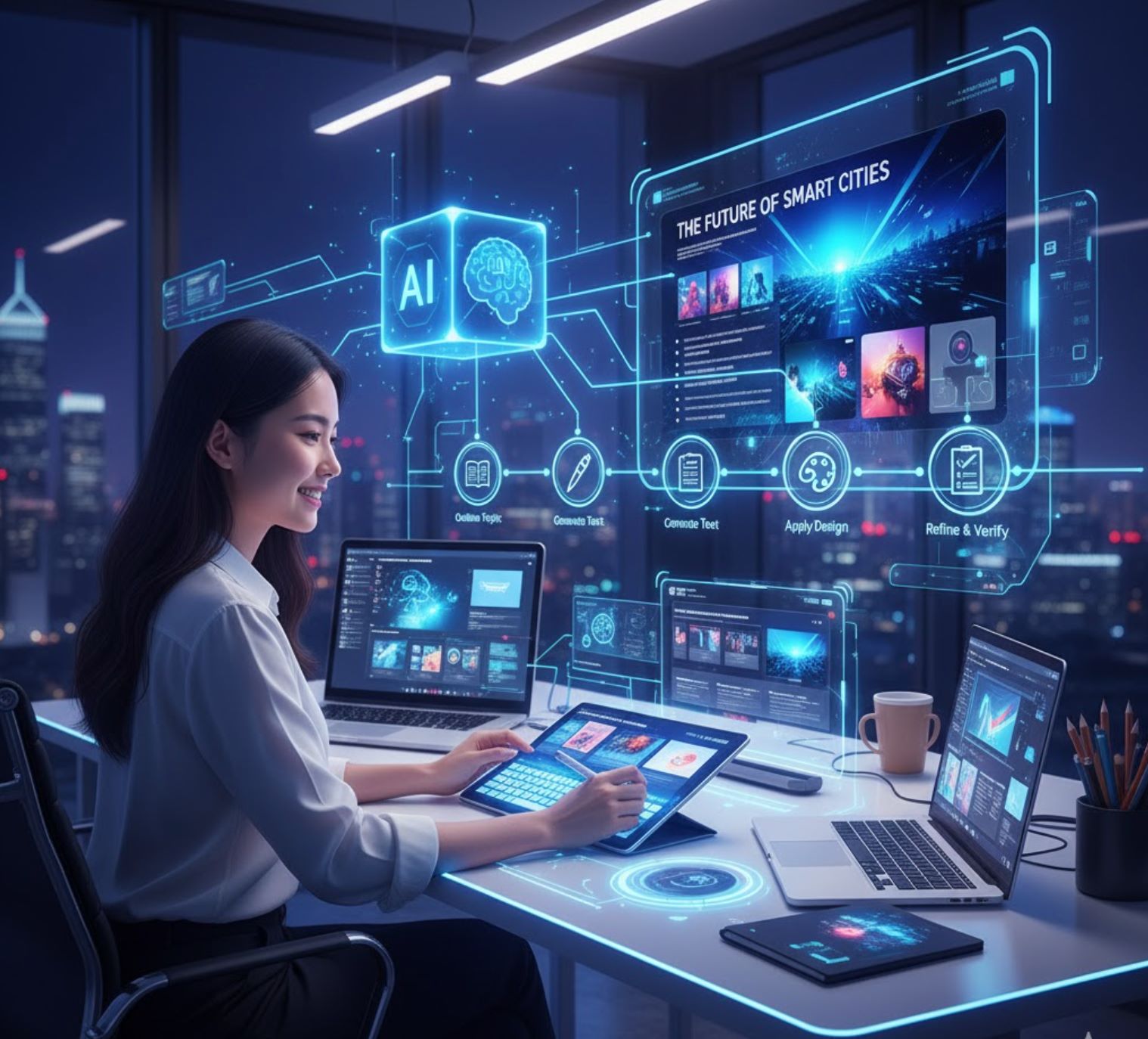
Comments 0
Leave a Comment
No comments yet. Be the first to comment!